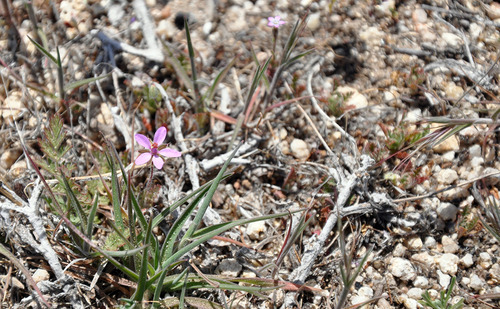
We are fortunate to have the largest state park in California, Anza Borrego Desert State Park, right here in San Diego County. It’s a great place to camp and hike, and an easy day trip by car. I spent many family vacations there, decades ago, scrambling up rocky trails in flip-flops, watching the wildlife, and playing card games. Kids at the campground would swim in the small hot spring-fed pool, where at dusk, bats would swoop down to drink, eliciting panicked shrieks from some of the children. The ranger at the campground check-in kiosk always had a tarantula on his sleeve. My sister and I would walk to the small campground store to get a soda or some chips. At night in the desert the sky is pitch black, sprinkled with a million brilliant stars. There is something special about the air — the wind howls, and gusts threaten to blow you over — even sound travels in a different way. There’s a kind of stillness and quiet that’s unique to the desert.
Every spring people visit the park’s 600,000 acres to see the wildflowers. Depending on the rains, some years are better than others. Like with weather or surf, there are websites where you can check to see how the flowers are doing, and find the best places to view them. It’s not something you can schedule by the calendar, because their blooming varies with the recent rainfall.
In a good year, if your timing is right, you might see a few hillsides dusted with purple, or quite a lot of amazing single plants here and there. If you are not so lucky, you might look across the dry landscape at the coarse brown and gray granite sand, with dull green plants scattered about, and mountains like enormous piles of rocks, and think there is nothing there, just inhospitable desolation.
This past Sunday Michael and I went to see the wildflowers and do some photography. There were a few patches of low-growing yellow flowers in the high desert areas, carpeting the areas between Manzanitas charred by a fire a few years ago. In the low desert the Ocotillos bloomed consistently everywhere, their tall graceful arms tipped by clusters of red honeysuckle-like flowers. But aside from those obvious sights, there wasn’t much going on. Or at least that’s what one might think at first glance.
To see wildflowers in the desert, you often have to look very carefully. You need to get out and walk. Stand still. Look down. Many plants are tiny, only inches high, with equally tiny flowers. Sometimes you will see hundreds of examples of one plant, and only one will be blooming. Perhaps you’ve missed the others, or maybe this one was in just the right place to get a little more water this year. Often the flowers are inconspicuous, hiding among the branches of an unassuming silver-green shrub
Cruising through the desert looking for photo opportunities can be a slow and tedious experience. Michael was driving, and cheerfully endured my dozens of requests to “pull over here.” In addition to many quick roadside stops, we went for a few short hikes. In just this one afternoon we saw a lot of beautiful scenery, and many animals, including lizards, chipmunks, something that might have been a prairie dog, a coyote, several jackrabbits, and a Red Diamondback rattlesnake resting in the shade of a plant alongside a trail. Birds flitted here and there, particularly uncooperative photographic subjects, and sprinkled the soundscape with their high whistles and chirps. On the way back, winding south through the Cuyamaca Mountains, we also saw two large herds of mule deer grazing in the meadows after sunset.
But it wasn’t until late that night, when I was going through the hundreds of photos I’d taken, trying to find the best few for an album, that it occurred to me that doing photography gives you a really different perspective on things. If we had just been driving through the desert, getting from point A to point B, it would have been easy to gaze out the car window at the dusty emptiness and think “This is boring. There’s nothing here. What an awful place.” But when your goal is to get stunning photographs, you look at things in a whole new way. You look for beauty. You look for tiny things. You look for the awesome. It might mean getting down on your hands and knees, moving to line things up at the right angle, or waiting for the sunlight to change just a little. It’s there, but it’s not obvious. You can see it if you’re looking for it.
It struck me that a lot of life is like this. It’s easy to stand around complaining and whining that things suck. But if our commitment is to seeing what’s beautiful around us, our experience changes. As with the wildflowers in the desert, we might need to get down on our hands and knees, move to change our point of view, or wait a while for the light to change. But the beauty is there. We just need to be open to seeing it.
~ ~ ~ ~ ~
Whether you are on Facebook or not, you should be able to view my album of photos from this trip.




